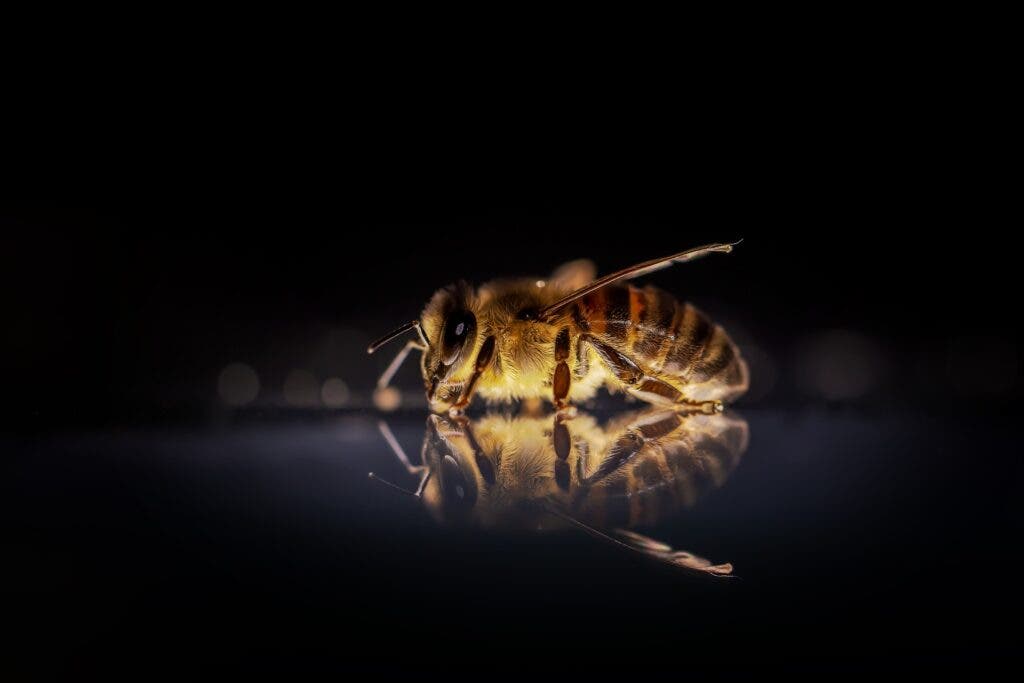Not all bee venom is made equal, a new study explains. According to the findings, ‘angry’ bees produce a more potent mixture. Bee venom is known for its benefits against degenerative and infectious diseases such as Parkinson’s and osteoarthritis.

This study is the first to analyze the protein diversity in samples of venom retrieved from western honeybees (Apis mellifera ligustica) in southern-western Australia. Surprisingly, they explain, bees that react with more intensity to stimuli from the researchers — in essence, more aggressive bees — produced a more protein-diverse venom.
Sting like a bee
“We found there are 99 bee venom proteins of which about one third had been formerly identified. The more proteins found in the venom, the higher the potential quality and effect,” said lead researcher Dr. Daniela Scaccabarozzi from the Curtin University School of Molecular and Life Sciences. “To understand the protein diversity of bee venom and find out what drivers impacted this, the multidisciplinary research team looked at a range of factors including the behavioral patterns of the bees.
The team worked with samples from 25 hives spread across a 200 km-latitudinal range in Southwestern Australia. The venom was analyzed using a mass spectrometer, which allowed the researchers to accurately measure levels of individual proteins. They then looked at how levels of these proteins varied with environmental and behavioral factors.
As far as behavioral factors are concerned, protein diversity levels seen in venom was associated with how active or docile individual bees were, the team reports. Bees that reacted more intensely to stimuli during the trials secreted “a richer, more protein-dense bee venom”, they add.
“The overall quantity of venom released by bees relies on the alarm pheromone secretion that induces other bees to aggressively react by stinging. This may be a result of changes in genetics that can provoke aggression in bees,” Dr. Scaccabarozzi explains.
Beyond genetic factors, temperature also seems to have an effect on the protein makeup of bee venom. High temperatures are especially detrimental to bee activity both inside and outside of the hive, according to the authors. Out of the 25 hives that they tested, the team found that those at sites with higher overall temperatures showed the lowest amounts of venom production.
“This met our expectation that seasonal factors do cause a change in the protein profile of bee venom. The optimal range for high protein diversity varies from 33 to 36 degrees Celsius,” Dr. Scaccabarozzi said.
Geographical location and the flowering stage of local flowers when harvested by the bees further impacted the composition of venom in each hive.
While research like this might seem inconsequential to most of us, it does actually have practical applications. Beekeeping is big business, and bee venom is quite the hot commodity — one gram of it can command up to US$300. Furthermore, the medicinal applications of bee venom are dependent on its quality. Knowing what factors influence this will allow us better quality and more reliable use of venom.
That being said, Dr. Scaccabarozzi says we need more research to help beekeepers ensure a constant quality of venom from their hives. This is especially important for clinical and therapeutic uses. Designing cost-effective harvesting strategies that maintain the quality of the venom would also go a long way towards establishing it for medical uses, the team adds.
The paper “Factors driving the compositional diversity of Apis mellifera bee venom from a Corymbia calophylla (marri) ecosystem, Southwestern Australia” has been published in the journal PLOS ONE.






